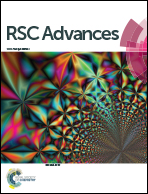Evaluation of disinfection by-products (DBPs) formation potential in ANAMMOX effluents†
Abstract
Disinfection by-products (DBPs), major health concerns in the potable reuse of municipal wastewater effluent, are process-related in wastewater treatment systems. Anammox is a promising and increasingly-applied technology for nitrogen removal in wastewater. In this study, the relationship between DBP formation potential and the anammox process has been investigated based on a lab-scale sequencing batch reactor (SBR). Excitation and emission matrix (EEM) fluorescence spectroscopy was employed to identify the compositions of the DBP precursors. The results showed that the effluents from the anammox SBR could yield both carbonaceous and nitrogenous DBPs after chlorination. Trichloromethane (TCM) was the dominant product among all DBPs detected. The anammox effluent has a low specific TCM formation potential of 0.778 μmol/mmol C and a trichloronitromethane (TCNM) formation potential of 0.0725 μmol/mmol C, leading to a TCM and TCNM formation potential ratio of 10.7. We found that substrate utilization of anammox did not enhance DBP yields, and the DBP formation potential decreased after 10 hour starvation. High pH conditions stimulated the production of TCM precursors in the anammox reactor. Humic acid-like and protein-like substances were identified in the EEM spectra of anammox effluents.



 Please wait while we load your content...
Please wait while we load your content...